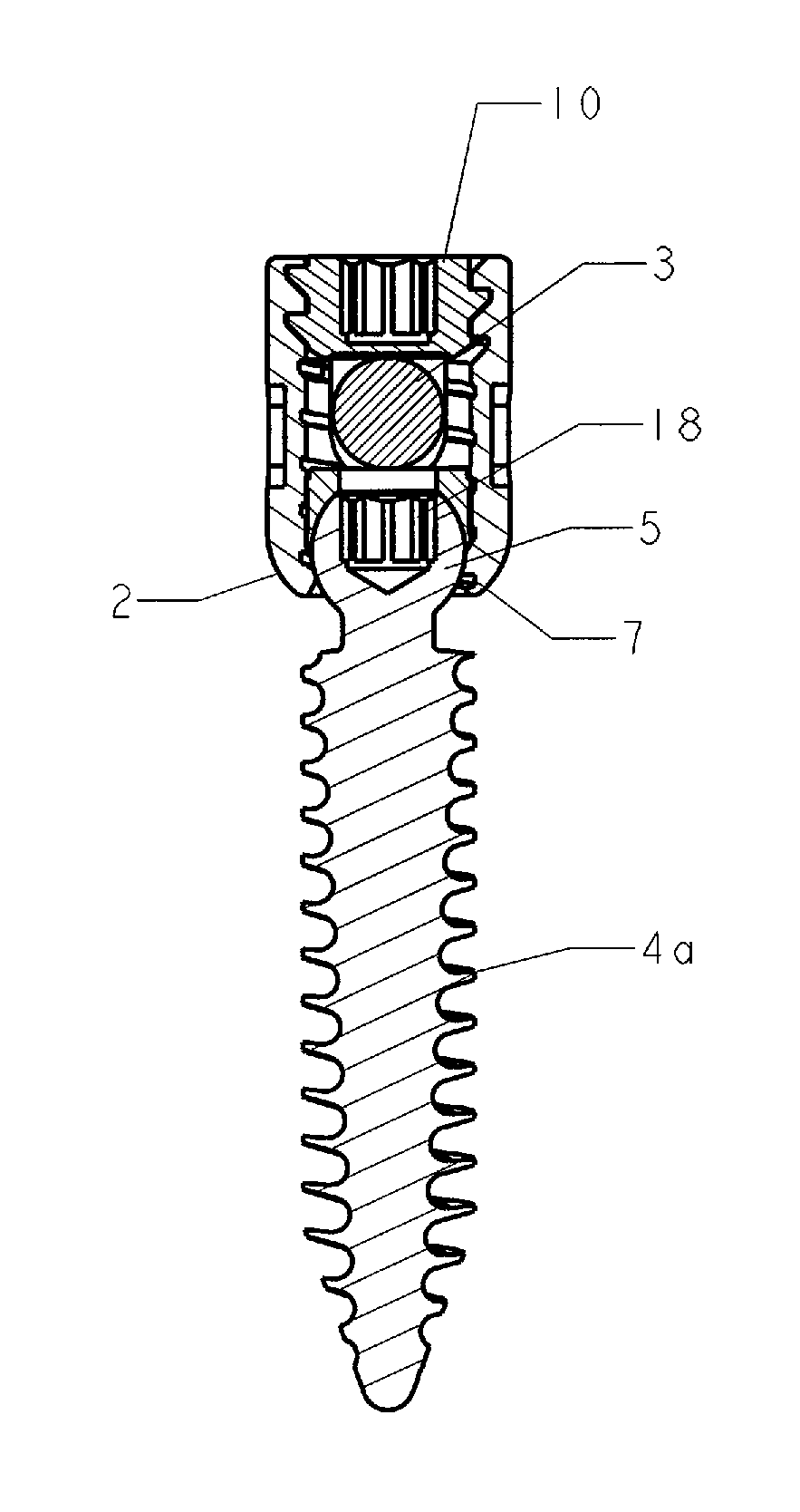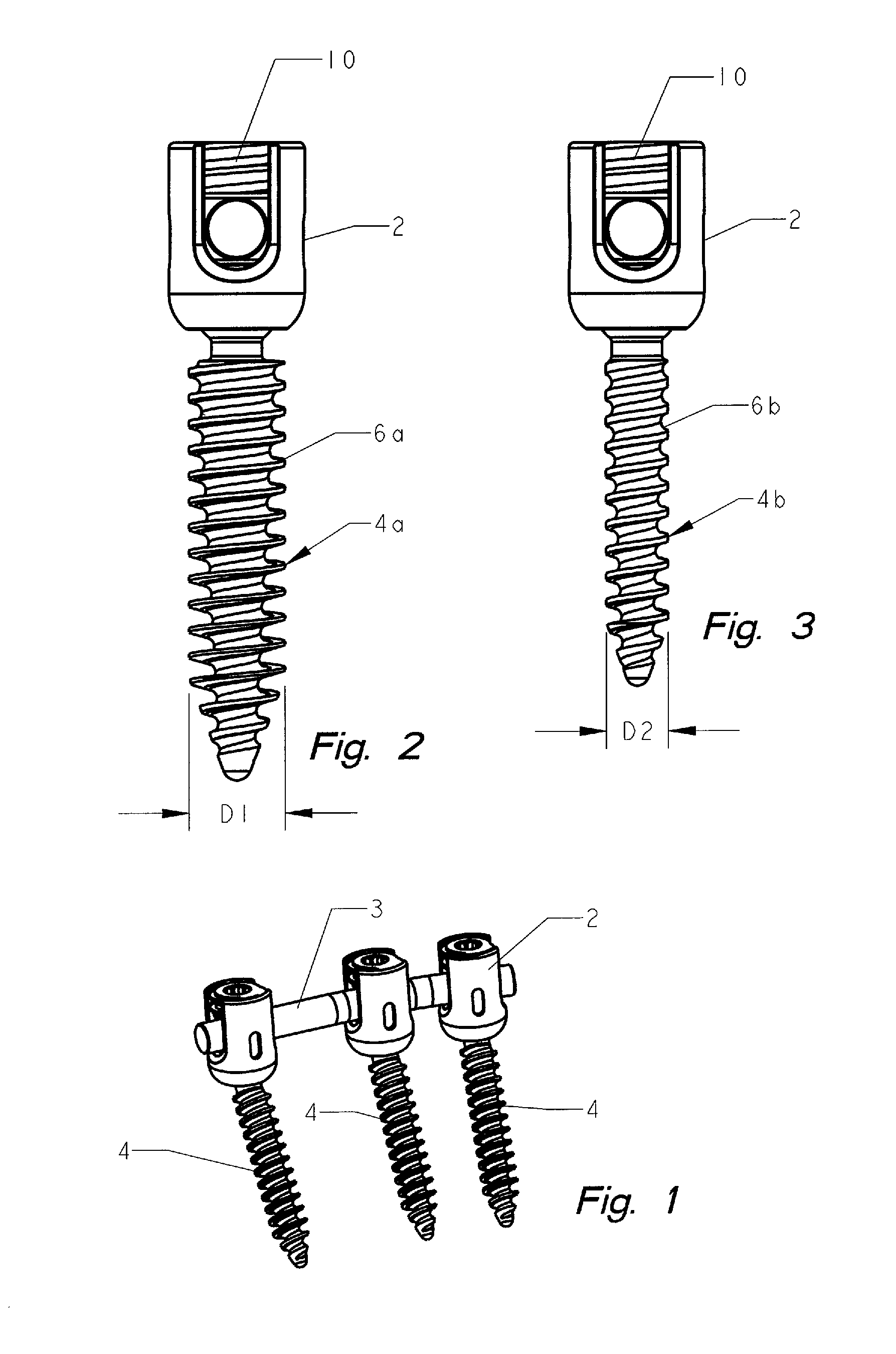Polyaxial bone screw
a polyaxial bone screw and screw technology, applied in the field of spinal implant systems, can solve the problems of bone screw exerting unpredictable forces, limited positioning, and large saddle, and achieve the effects of convenient use, reliable, and simple positioning
- Summary
- Abstract
- Description
- Claims
- Application Information
AI Technical Summary
Benefits of technology
Problems solved by technology
Method used
Image
Examples
Embodiment Construction
[0065]It is to be understood that while a certain form of the invention is illustrated, it is not to be limited to the specific form or arrangement of parts herein described and shown. It will be apparent to those skilled in the art that various changes may be made without departing from the scope of the invention and the invention is not to be considered limited to what is shown in the drawings and described in the specification.
[0066]Now with reference to FIG. 1, the spinal fixation system 1 includes a plurality of polyaxial screws 4 each in cooperative relationship to a rod base member 2 for fixedly securing a stabilizing rod 3.
[0067]FIGS. 2 and 3, illustrate two anchoring devices wherein the diameter of the threaded shank portion 6a of the polyaxial screw 4(a) in FIG. 2 (D1) is larger than the threaded shank portion 6(b) the polyaxial screw 4(b) illustrated in FIG. 3 (D2).
[0068]FIGS. 4, 5, 6 and 7 illustrate polyaxial screws 4(a) and 4(b) each having a spherical head 5. The sphe...
PUM
 Login to View More
Login to View More Abstract
Description
Claims
Application Information
 Login to View More
Login to View More - R&D
- Intellectual Property
- Life Sciences
- Materials
- Tech Scout
- Unparalleled Data Quality
- Higher Quality Content
- 60% Fewer Hallucinations
Browse by: Latest US Patents, China's latest patents, Technical Efficacy Thesaurus, Application Domain, Technology Topic, Popular Technical Reports.
© 2025 PatSnap. All rights reserved.Legal|Privacy policy|Modern Slavery Act Transparency Statement|Sitemap|About US| Contact US: help@patsnap.com



